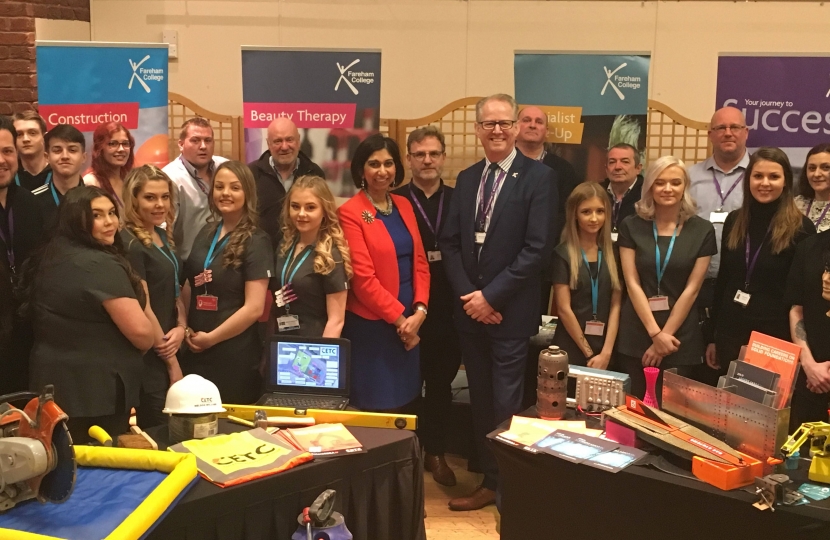
Fareham MP Suella Braverman has paid tribute to local teachers as the summer holidays begin. Their hard work means that more children are gaining the skills and knowledge they need to get on in life.
4,374 more children in Fareham are now in schools rated good or outstanding, compared with 2010, and 1.9 million more children are attending good or outstanding schools nationally. 85 per cent of schools are now rated good or outstanding, up from 68 per cent in 2010.
Literacy levels have been rising since the introduction of the phonics screening check in 2012, meaning more children are mastering the fundamental skills they need. In 2012, 58 per cent of 6-year olds in reached the expected level in reading nationally, compared with 82 per cent last year.
Reforms to the curriculum mean more pupils are studying the core, academic subjects they need to get on and disadvantaged students are more likely to go to university than ever before. At the same time, reforms to apprenticeships mean that young people have quality, vocational options as they await their GCSE and A-Level results.
Commenting, Suella Braverman MP said:
“I commend the passion and dedication of our teachers working in schools across Fareham, and as we look forward to the summer holidays, I want to thank them for their hard work.
“Many local young people will now be awaiting exam results, which is always a nervous time. But the hard work of teachers, combined with this Government’s reforms, means pupils will have more options than ever before – whatever path they chose to take.”
More information
- The proportion of schools rated good or outstanding has increased from 68 per cent in 2010 to 85 in 2019. There are now 1.9 million more children in good or outstanding schools (DfE, 28 March 2019, link; Ofsted Data View, accessed 17 July 2019, link).
- 163,000 more 6-year-olds are on track to become fluent readers since the introduction of the phonics screening check in 2012. Since the introduction of the phonics screening check in 2012, the proportion of pupils meeting the expected standard in phonics has risen from 58 per cent to 82 per cent (DfE, 27 September 2018, link).
- The attainment gap between disadvantaged students and their more affluent peers has narrowed since the introduction of the Pupil Premium. The attainment gap between disadvantaged pupils and their peers has narrowed by at least 9.5 per cent since 2011, when the Pupil Premium was introduced. The Pupil Premium, which is worth over £2.4 billion this year alone, provides additional funding to support pupils who may face additional challenges at school (DfE, 17 June 2019, link; DfE, Pupil premium: allocations and conditions of grant 2019 to 2020, 21 June 2019, link).
- The introduction of T-Levels. The first three T Levels for Digital, Education and Construction will be taught from September 2020, with a further seven taught from 2021. T Levels will be high-quality technical alternatives to A Levels, combining classroom theory, practical learning and an industry placement (DfE, 11 July 2019, link).
- Between 2010-11 and 2017-18, over 3.8 million people started apprenticeships. At the same time, the Government is driving up the quality of apprenticeships with over 400 new apprenticeship standards. These have been developed in consultation with industry, ensuring they develop the skills employers need (DfE, 4 March 2019, link; House of Commons Library, Apprenticeship Statistics: England, 6 November 2018 2018, link).
- Disadvantaged 18-year olds are more likely to go to university than ever before. Disadvantaged 18 year-olds are now 52 per cent more likely to go to university than 10 years ago, and in 2018, for the first time ever, over 20 per cent of English 18-year-olds living in the lowest participation neighbourhoods entered higher education (Hansard, 4 June 2019, Vol. 798 Col. 63, link; DfE, 15 July 2019, link).

